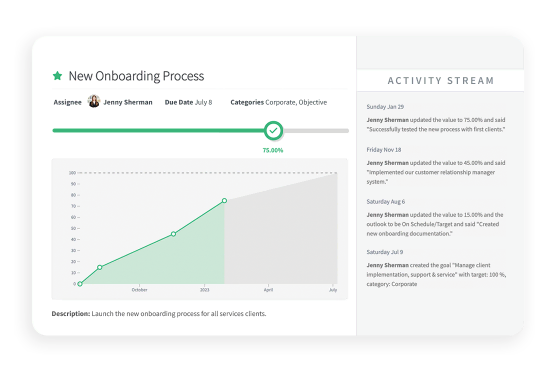
Alternatives to SMART Goals
SMART is great, but it has become cliched. Many people assume they know what it means without ever thinking very carefully about it. That said, the science behind SMART is as relevant as ever.
The majority of the great discoveries on goal setting came from Professors Edwin Locke and Gary Latham. After two lifetimes of research these men partnered on a seminal book released in 1990 that summarized the science of effective goal setting. It is called “A Theory of Goal Setting and Task Performance.”
The book is full of insights and well researched ideas, but it doesn't have any catchy acronyms. Here is what the professors say about setting effective goals regardless of the methodology or acronym you choose.
The Line between Success and Failure Should Be Crystal Clear
Great goals don’t leave any room for interpretation. There should be no ambiguity in what accomplishing the goal will look like. This is because corporate goals are a form of communication, they are about two or more people agreeing on a shared destination. If the goal isn’t clear it may not be aligning everyone in the same direction.
Additionally, unclear goals can have a negative impact on persistence. People will reinterpret an ambiguous goal to make their life easier just when things start to get hard. The S, M, and T in SMART all relate to having unambiguous goals.
Goals Should Be Challenging
A person should see their goals as difficult but achievable. This leads to the greatest efforts. When we believe we can achieve a goal but know it will be hard, we feel energized and excited about the prospect of succeeding at something meaningful. Conversely if we don’t see the goal as difficult we won’t be inspired by it, and if we believe a goal is too difficult we can become overwhelmed by it and give up before starting.
Note that all of this is about perception. Great leaders often convince the people around them to believe in audacious goals they might never have tried on their own.
We Must Be Committed to Our Goals
Part of the power of goals is that they focus our attention and increase our persistence. We are more likely to follow through when things get difficult if we’re trying to accomplish a goal. However, this is only true if we’re committed to that goal.
Organizations drive goal commitment in many ways, but the best option is to inspire employees to believe in the importance of their goals. When NASA was shooting for the moon, no one had to post the junior engineer’s goals on the bulletin board to keep him committed to the mission.
We Should Have the Necessary Skills
How much a goal impacts our performance is partly related to whether or not we already have the skills to achieve the goal. Goals are great at driving persistence, but they are not as good at driving creativity and learning. The impact on performance of a goal will be moderated by how capable we already are at achieving it.
The more we know about how to achieve a goal, the greater the impact goal-setting will have on our performance.
Effective Goals Need Control Systems
Goals can be too effective. They can become so motivating that they drive your employees to cheat.
That is why it is important for goals to come with control systems. It is not enough to achieve our goals, we must achieve them in the right ways. Effective control systems include a strong culture, well-articulated expectations, or oversight.
Whatever framework you choose, be sure that your goals include the scientific fundamentals of effective goal setting. Locke and Latham have much more to say about goals in their book, it's worth a read.



